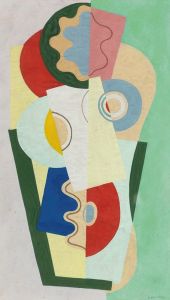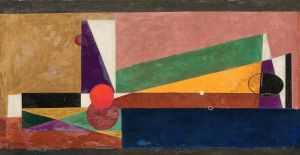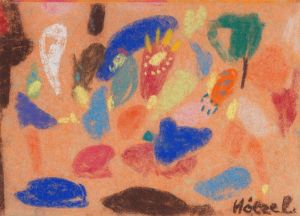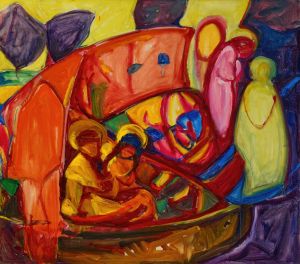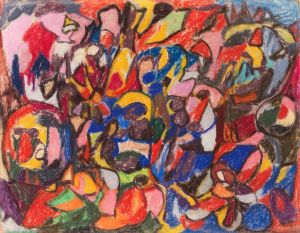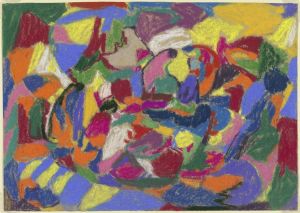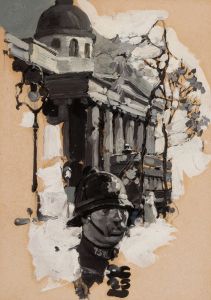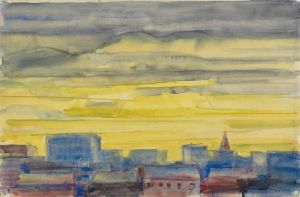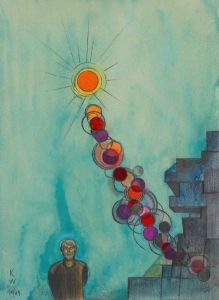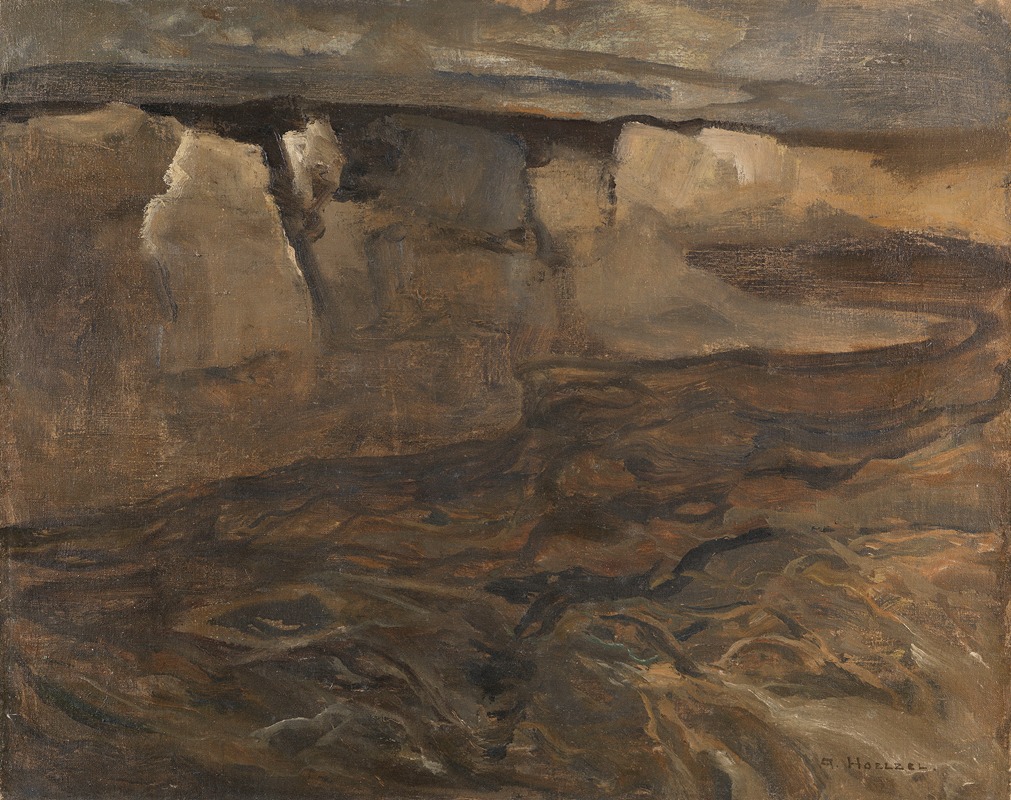
Dachauer Landschaft mit weißem Felsen
A hand-painted replica of Adolf Hölzel’s masterpiece Dachauer Landschaft mit weißem Felsen, meticulously crafted by professional artists to capture the true essence of the original. Each piece is created with museum-quality canvas and rare mineral pigments, carefully painted by experienced artists with delicate brushstrokes and rich, layered colors to perfectly recreate the texture of the original artwork. Unlike machine-printed reproductions, this hand-painted version brings the painting to life, infused with the artist’s emotions and skill in every stroke. Whether for personal collection or home decoration, it instantly elevates the artistic atmosphere of any space.
Adolf Hölzel was a German painter and art theorist, known for his contributions to the development of modern art in Germany. He was born on May 13, 1853, in Olmütz, Moravia, which is now part of the Czech Republic. Hölzel's work is characterized by his exploration of color theory and abstraction, and he played a significant role in the transition from traditional representational art to modern abstract art.
One of Hölzel's notable works is "Dachauer Landschaft mit weißem Felsen" (Dachau Landscape with White Rock). This painting is part of his landscape series, which he created during his time in Dachau, a town near Munich, Germany. Dachau was known for its vibrant artists' colony in the late 19th and early 20th centuries, attracting many artists who were interested in capturing the natural beauty of the Bavarian countryside.
"Dachauer Landschaft mit weißem Felsen" exemplifies Hölzel's interest in the interplay of color and form. The painting depicts a serene landscape scene, featuring a prominent white rock formation set against a backdrop of rolling hills and a clear sky. Hölzel's use of color is particularly noteworthy; he employs a palette of muted earth tones contrasted with the striking white of the rock, creating a harmonious yet dynamic composition.
Hölzel's approach to painting was heavily influenced by his studies of color theory and his belief in the spiritual and emotional power of color. He was a proponent of using color as a means of expression, rather than merely a tool for representation. This philosophy is evident in "Dachauer Landschaft mit weißem Felsen," where the colors are used to evoke a sense of tranquility and balance.
In addition to his work as a painter, Adolf Hölzel was an influential teacher and theorist. He taught at the Academy of Fine Arts in Stuttgart, where he mentored several prominent artists, including Oskar Schlemmer and Johannes Itten. Hölzel's teachings emphasized the importance of abstraction and the exploration of new artistic forms, which had a lasting impact on the development of modern art in Germany and beyond.
"Dachauer Landschaft mit weißem Felsen" is a testament to Hölzel's innovative approach to art and his ability to capture the essence of a landscape through color and form. The painting reflects his commitment to pushing the boundaries of traditional art and exploring new ways of seeing and interpreting the world.
Today, Adolf Hölzel is remembered as a pioneer of modern art, whose work continues to inspire artists and art enthusiasts alike. His contributions to the fields of painting and art theory have left a lasting legacy, and "Dachauer Landschaft mit weißem Felsen" remains an important example of his artistic vision and skill.





